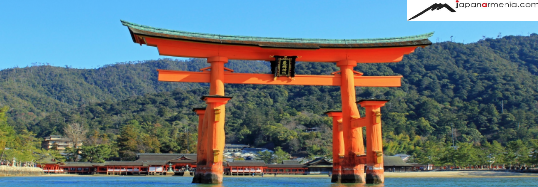
日本の建築
Architecture in Japan, as well as a lot of things in this country, includes early ancient monuments and modern masterpieces. The all ancient maintained buildings of the world (VI century) are located in Japan. However, there are many contemporary constructions and architectural monuments here in Japan.
The powerful stimulus of architecture, as well as the culture of Japan, is the results of Buddhism adoption. Up to the XIX century the main concentration in architecture was China, however, Japanese architects turned the foreign samples into the real Japanese masterpieces.
Ise and Izumo Shinto saint places show the real appearance of Buddhist architecture in Japan. Current buildings are not ancient; however, they are the reproduction of the old and impressive forms. For instance, houses on long columns surrounded with forests. These houses had high front roofs with a large overhang and cross protruding columns. In XIX century the restoration of these monuments was on the base of mainly Japanese Shinto saint places. The typical feature of Shinto saint places was the torii gates pointing the ways to the saint place. One of the symbols of the country is the Itsukushima torii saint place rising up in the water (to the west of Hiroshima).
The ancient Buddhist monasteries of Japan are mainly located in Nara prefecture and nearby to it. These are the extensive, accurately designed complexes. Rectangle drawn condo building is usually situated in the centre of rectangular courtyard («golden hall» place of warship the saints) and pagoda which is a multi-ground arch tower. The treasury, bell-tower and other additional buildings are extended alongside this tower. The main glorious gates (nondaimon) are impressively drawn extending from the southern part.
Horyuji is the most ancient monastery of Japan located in Nara prefecture. There are a number of ancient buildings (mainly from VI-VIII centuries), unique frescoes and wonderful collections of sculptures are preserved in this monastery. The other glorious monastery is Todaiji with its main temple daibutsuden «Buddha’s glorious hall». The restoration of this monastery began in the XVIII century. It is the biggest wooden building of the world (57×50 meter, height 48 meter).
In XIII century another type of monastery, the so-called Zen-schools, was appeared. Here the building was built along with the north to the south and opening in front of the pilgrims. As a rule, Zen-monasteries were built on mountainous places surrounded with forests; accordingly they were extended in nature. Landscape gardens, the so-called «stone gardens», were located there. The most famous is the «Zen of five big temples» in Kamakura nearby Tokyo till XIII century. However, the later maintained little buildings and monasteries kept the praying atmosphere. They penetrated into the nature creating wonderful close connection.
Japanese secular architecture came into existence very late with some samples. In the middle of the XVI century and in the beginning of the XVII century the feudal castles appeared to be impressive. Accordingly, the governing era came into existence. The wonderful, multi-ground and wooden buildings were on the firm stone base. They were surrounded with low walls, bastions and small pits. Himeji is the biggest one nearby Kobe (1601-1609). It is a complex consisting more than 80 buildings.
After the creation of the world which was remarkable with the existence of Edo Era (1603-1868) the royal palaces were widely built in Japan. Unlike castles, these were one floor structures consisting of grouped asymmetric buildings. The first ones were included in the castle system, for example, great Ninomaru royal palace in Nijo castle (1601-1626) in Kyoto. The others were built as park-gardens and villas. The most famous among them was the royal palace of emperor villa nearby Kyoto (1610, 1650). It is one of the perfect buildings of Japan. Like other traditional buildings, the royal palaces also were carcasses, the walls had no constructive function and frequently they were replaced by the landscape with wide hole decoration on it and portable partitions; in many ways it turned to be a border between interior and nature. Accordingly, the affection and the reality sense became stronger enough due to the unvarnished wooden pillars, wooden floor, tatami carpets in the rooms and paper partitions
In spite of the ancient architectural monuments of Japan, there are many modern constructions here which are very amazing with their unusual appearance.
http://visitjapan.ru/japan/arhitektura/から取られた材料
translated from Armenian into English by Tatev Harutyunyan











